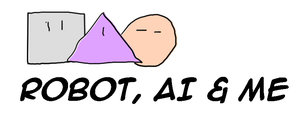Biological neural networks for the most part are a metaphor for how much next level AI is built. For Artificial Neural Networks (ANNs) we take the concept of neurons firing and passing information to one another using synapses and create computing models that do something similar. We give our artificial neurons a state (typically a number between 0 and 1) and arrange them into layers - often thousands and thousands of layers - that are hidden between the input and the eventual output. The ANN then acts like a stimulus engine - a response is put in - it ripples through the layers changing values and weights and then a response is output. Those inputs could be cat pictures and the ouputs could be text saying 'siamese cat'
But what if we moved beyond just the metaphor of neurons and synapses and actually tried to replicate the human brain?
Many efforts are underway to replicate the computer that is our brain.
- Ray Kurtzweil's has written a book on how to How to Build a Mind. Looking at the problem from an engineering perspective albeit on paper.
- The Brain Architecture Project is working up to building a human brain via the building of mouse brains.
- The Human Brain Project (HBP) is a European scientific research project looking to better model and understand the brain for neuroscience, computing and medicine.
- In 2008 HP Labs developed the memristor (memory resistor) to move beyond traditional electronics and circuitry approaches to developing a brain (but is now plagued with production costs and buyer issues)
- The US Military’s scientific research and development organisation DARPA is developing next generation implantable brain computer interfaces to radically scale up how we observe the brain with their Neural Engineering System Design (NESD) project
And there are countless other examples of work in this area. We aren't close but this work isn't going to disappear anytime soon. More money and effort will continue to be poured into the 'teardown' of the brain and ultimately it's synthetic replication.
Ok, so say we can recreate the brain? Would it be more intelligent than our biologic model? It would certainly have the potential to be faster and run for longer but would it be any smarter? Would it need to be embodied to develop the level of intelligence we have? Would it only be a little bit smarter OR a whole lot smarter?
It's entirely possible that the replication of the human brain is simply a passing phase in our mechanical modelling of human intelligence.
I only have questions here - who has the answers?
















